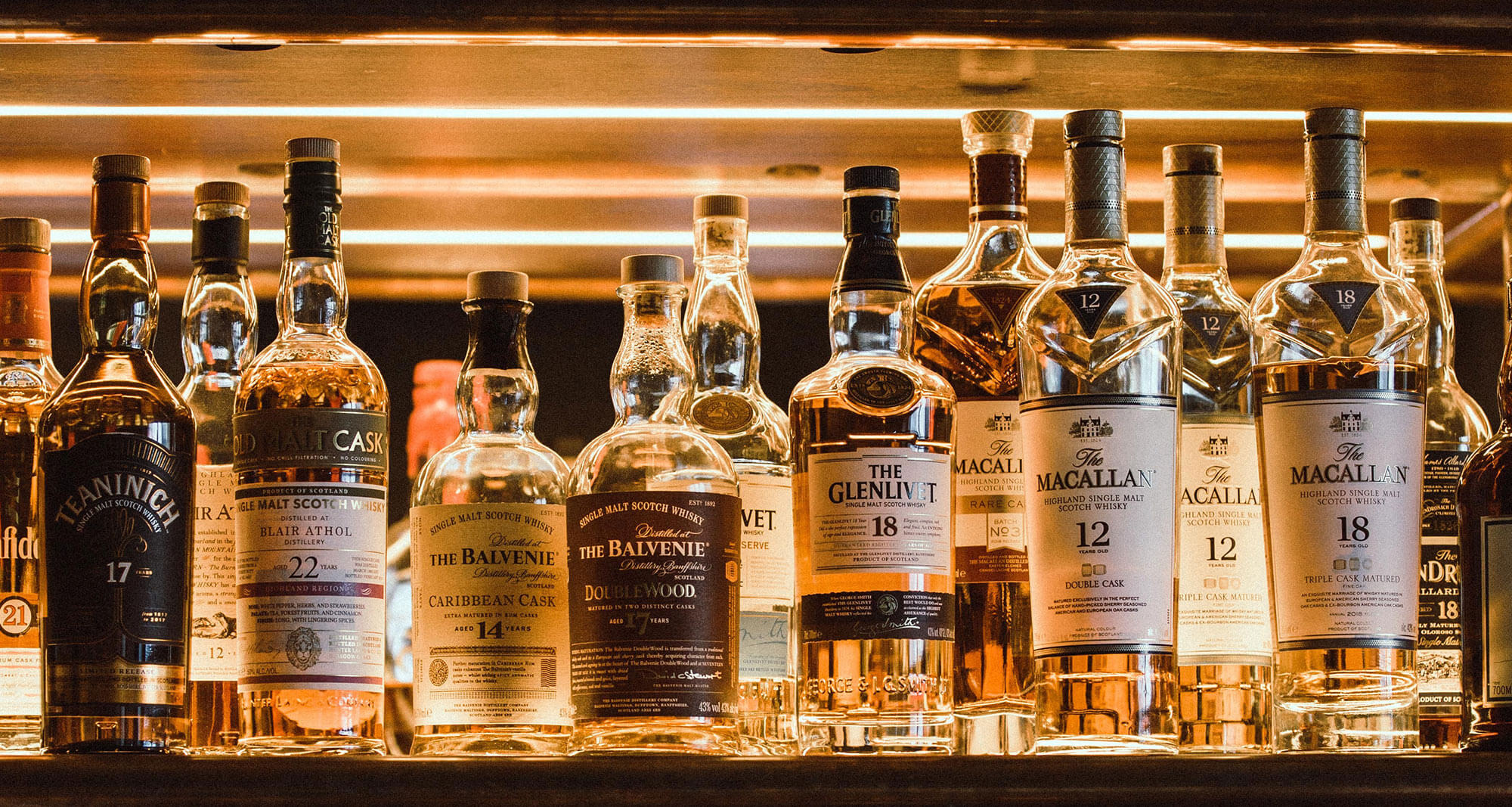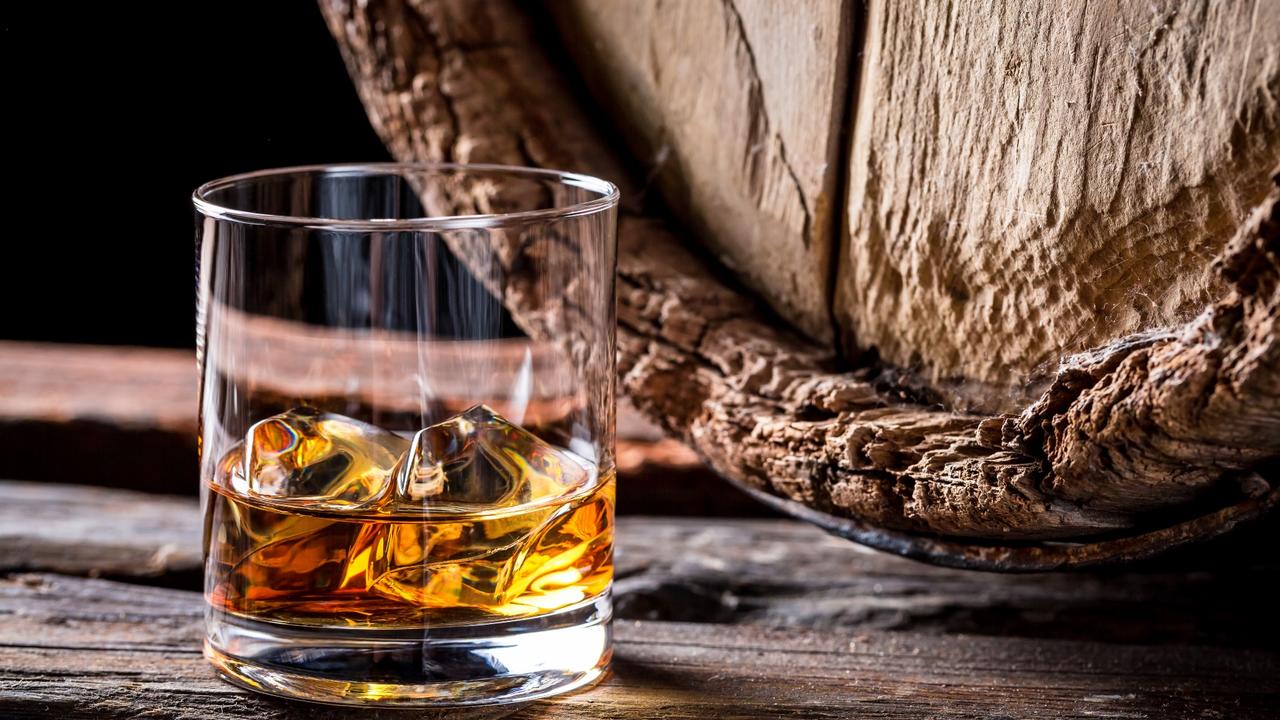Scotch whisky is arguably Scotland’s most famous export, despite the haggis and kilts. There are hundreds of varieties around today and many different blends too. So let us turn you into a Scotch whisky expert in one article...
What Is Scotch Whisky?
Scotch whisky is a distilled spirit made from cereal, water and yeast. Scotch whisky is only produced in Scotland and often uses barley as the main grain of choice.

Scotch whisky history
1494 - Scottish distilleries have been producing whisky since the 15th century. Records show that even royalty liked a ‘wee dram’. Back in 1494, King James IV of Scotland sent a large consignment of malt to a Scottish friar to make what he called “aquavitae” or as we now say ‘whisky’. This was the first record of whisky. As monks travelled the country, so did whisky distillation, which offered many people the chance to try the ‘water of life’.
1608 - The Bushmills Distillery opened in Northern Ireland, after whisky distilling spread to England and Ireland. Around the same time, America was soon learning how to distill whisky, as Europeans sailed over the Atlantic for a new life.
1707 - England and Scotland joined together in the Act of Union, where the government introduced the 'Malt Tax'. The tax was a huge burden on Scotch whisky producers. Distillers used the night to hide their whisky making activities from the tax collectors. This is where the term “moonshine” comes from.
1800s - Aeneas Coffey revolutionised whisky distillation by creating a new type of still that allowed grain whiskies to be produced on a larger scale. Due to this increase of capacity, grain and malt whisky began to be mixed together, creating 'blended whisky'. As Britain expanded her empire, the whisky started reaching as far as Japan, India and South Africa.
1988 - The Scotch Whisky Act of 1988 saw the government of the United Kingdom mandate for requirements in Scotch whisky production. These included geographical and production specifications to protect and determine Scotch whisky.
Scotch whisky has heavily influenced the development of other types like Irish whiskey, American Bourbon, Tennessee whiskey and even Japanese whisky. It’s played a pivotal role in whiskey’s long history and popularity.

How is Scotch whisky made?
All whiskies follow a similar process to one another; however, it's the subtle differences that can vastly change each whiskey. There are five key steps to making Scotch whisky.
1. Malting - The first step to making Scotch is to turn the barley into malted barley. First, water and malted barley are mixed together to soak the grain. After, it's dried a number of times, laid out across the floor and left to germinate for roughly a week.
The germination process is stopped once little green shoots are seen coming from the barley and placed into the kiln.
2. Drying and Mashing - The partially-germinated malted barley is then dried in the kiln to stop it from growing further. It’s at this point that peat can be added to the fire to infuse the grain with that famous, peaty flavour in peated whisky.
Once dried, the malted barley is ground down into a powder called ‘grist’. This is mixed with hot water in a large pot called the ‘mash tun’. The starch in the grain breaks down and you are left with ‘wort’.
3. Fermentation - The wort is then poured into a ‘washback’, which is essentially a big tank. Yeast is added to start the fermentation. In this step, Scotch whisky makers are trying to create the alcohol.
4. Distillation - The liquid from fermentation is the ‘wash’ and is distilled twice. Two copper stills are used during this process. The wash still heats and turns the alcohol into a vapour. The second still (the spirit still) picks up the condensed alcohol. At this point, the liquid is called ‘low wines’. The alcohol is continuing to be distilled in the last still too.
5. Maturation - This spirit is then poured into oak casks for the maturation process, to officially become Scotch whisky.
In Scotland, there are some very strict Scotch whisky regulations, with regards to production. Some key aspects are that the spirit must be matured for a minimum of three years in a charred oak barrel. It must, of course, be made in Scotland, too.
Learn more about malted barley here in our 'what is whisky made from'. The very start of Scotch whisky production!

Types of Scotch whisky
Single Malt - Single malt whiskies are made from one variety of barley in one location, sometimes from only one distillery. It’s distilled twice using pot stills and aged in oak barrels, which give it a rich woody colour and unique flavour. The characteristics of a single malt Scotch whisky change considerably depending on the water, malt, oak barrels, peat, the area and the production process.
Single Grain - A single grain Scotch whisky is distilled at one single distillery with either corn or wheat. Under 10% of malted barley is usually added to this style, which differentiates itself against a single malt.
Blended Malt - A blended malt Scotch whisky is made completely with barley from multiple distilleries. It's a blend of two single malts. Whisky distillers are able to bring two different whiskies to harmonise both flavours into a smooth blended Scotch whisky.
Blended - Blended Scotch whisky is made from malt barley and another grain. A single malt and a grain whisky are most often mixed to produce a smoother drink. This allows many brands to standardise the character and flavour of the whisky. It takes a great deal of expertise and the nose of a master distiller to match flavour combinations from dozens of different single malts and grain whiskies to create a perfect blended Scotch whisky.
Blended Grain - A blended grain scotch whisky is when single grain Scotch whiskies are blended together. They must also be distilled at multiple distilleries.
Want to know about other whiskies around the world? Visit our 'what is whiskey' page.
Why is Scotch whisky spelled without an 'e'?
Seeing as the word ‘whisky’ originated from Gaelic, this is where the confusion lies. Scottish Gaelic originally coined and spelled the term, but the Irish eventually tried to differentiate themselves from Scotch whisky. They decided to use an ‘e’ for their whiskey, hence Irish WHISKEY.
When talking about specific types of whiskey, make sure you’re using the correct spelling!
Where is Scotch whisky made?

Scotch whisky is made exclusively in Scotland. There are the five main Scotch whisky making regions of Scotland.
Highlands and Speyside - The Highlands region produces excellent single malt Scotch whiskies that are almost as varied as its scenery. Single malt Scotch whiskies from here offer a variety of different flavours like sweet, smoky and even slightly salty. The Glengoyne distillery is one of a number of renowned distilleries in the area and produces an unpeated whisky with complex, bold flavours.
In Speyside, again, there are dozens of distilleries, producing many single malt whiskies. Strathisla is one of the most famous and oldest distilleries in Scotland, founded in 1786. It produces a sublime single malt that is also used as the main component of the Chivas Regal Blend.
Lowlands - There are currently only six operational whisky distilleries in the Scottish Lowlands and today this region is mostly known for producing whisky to be used in blended grain Scotch whisky. However, there are still some good single malts to be found. The Bladnoch distillery, for example, produces a highly palatable Scotch.
Campbeltown - Located in south-western Scotland, Campbeltown was once the beating heart of Scotch production. Famous for smoky, peaty single malts, in Cambeltown, you can find a range of full-bodied varieties. The Springbank distillery, founded in 1828, is the oldest independent whisky producer in Scotland.
Islands: The Scottish islands produce an array of peaty single malt Scotch whiskies. These distilleries are based on Arran, Lewis, Skye, Mull, Orkney, Arran and Jura. Each island produces a different charactered Scotch.
Islay: Quite literally an island unto itself. Islay is in the west of Scotland and has several well-distinguished distilleries. Islay whiskies hold dry, smoky and strong characters, with some salty coastal influences. The famous Laphroaig distillery produces its rich, peaty Scotch on the island.
Get some whisky expert tips on how to drink Scotch like a Scotsman.

What is the difference between Malt whisky and Grain whisky?
The biggest difference between the two types of Scotch is that malt whisky is only distilled with malted barley. Grain whisky, however, is distilled from any other type of cereal grain. Wheat, rye, unmalted barley and corn are some of the common grains used in grain whiskies. Grain whisky can even use a combination of cereal grains for its grain makeup.

Why does Scotch whisky have a smoky flavour?
During production, some Scotch whiskies are dried in the kiln with burning peat. The barley takes on the peaty notes and flavours the Scotch whisky with it. Whilst peaty and smoky are different flavours, a peated whisky does have a degree of smokiness due to this production process.
Want to know more about whiskey? Visit our 'what is whiskey' page.
If you enjoyed this article then read the next chapter in our whisky series: How to taste whiskey.
Feel inspired to master Scotch behind the bar? Take one of our EBS Bartending Courses.

